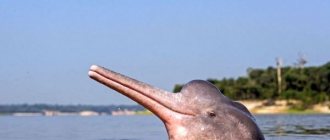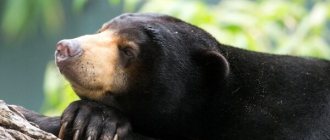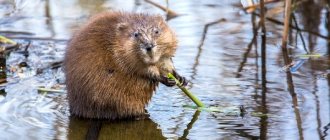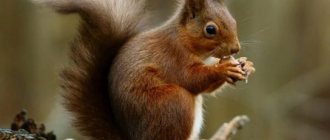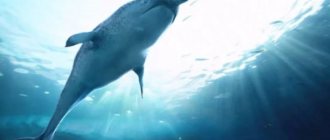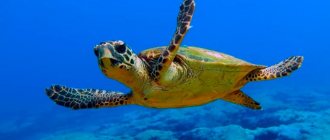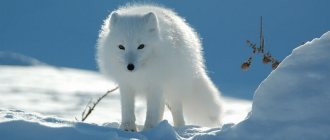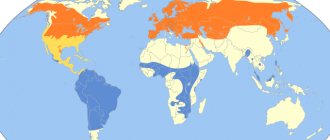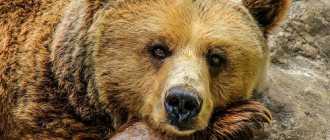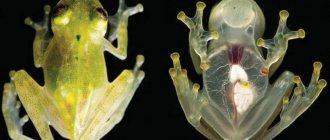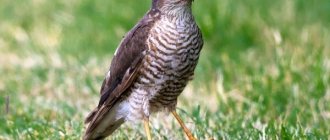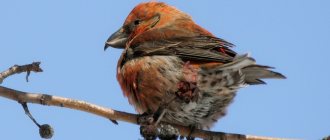Origin of the species
The first information about the baiji dolphin appeared during the Han Dynasty. However, paleontological excavations indicate that animals migrated to the Yangtze River from the Pacific Ocean 20 thousand years ago.
The ancient Chinese were kind to the inhabitants of the river depths, protected them and considered them deities; they had no natural enemies, so they became widespread in Chinese reservoirs.
Description of the animal
This is a very beautiful graceful animal of a gray-bluish color with a white or ash-white belly. The stocky, human-sized body is framed by broad pectoral fins. The dorsal fin is located closer to the end of the body, it is more flat.
A characteristic feature of the dolphin is the presence of a rostrum - a narrow and slightly curved beak. The lower jaw is white, and the upper jaw has a white line along the edge.
The upper row of teeth consists of 34 pairs, and the lower row of 36 pairs of strong incisors. The eyes are located high on the head, their function is greatly reduced, so the animals have very poor vision.
The female is usually larger than the male. The body length of a male or female individual ranges from 1.4 to 2.5 kg, and it weighs 42-167 kg.
Amazonian inia, or buto
The first detailed description of the Amazonian inia was given by the French scientist D'Orbigny, who, traveling in Peru, was able to catch this animal and study its appearance.
The length of the inia's body can reach 3 meters, and its weight can reach 70 kg. It lives in the Amazon, Rio Negro, and Orinoco basins. This dolphin can be called a real freshwater whale. It is slow (moving speed does not exceed 10 km/h); its echolocation apparatus and sensitive snout help it navigate in muddy water. The main type of food is small fish. This river dolphin often comes to the surface to breathe in oxygen. Inias live only in small communities, no more than 5-6 individuals.
The muzzle is very elongated, blunt at the end and covered with bristles, and looks very much like a beak. There are 66-68 teeth on the upper and lower jaws. They are very sharp, and the crowns are large and curved back. The semilunar shape of the flippers, the division of the caudal fin into blades, and the low location of the adipose fin are typical features of the Amazonian ini. The upper part of her body is pale blue in color, while the lower part is colored reddish pink. Elderly dolphins can be almost white. Therefore, the inia is often called the “white river dolphin.”
Character and lifestyle
The river inhabitants had a diurnal lifestyle, that is, during the day they swam out to hunt, and at night they rested in areas with a calm current. They were usually found in pairs, although sometimes they united in groups of 3-15 individuals, especially in areas rich in food or during periods of drought.
Dolphins are characterized by seasonal migrations: in the summer they swam into small channels, and in late autumn and during the rainy season they returned to the main channel of the river. The longest migration route was about 200 km.
The freshwater dolphin was very cautious and timid; when wounded, it made a piercing sound similar to the mooing of a calf.
External structure and lifestyle of susuk
This animal of the River dolphin family has a very slender body, a semi-lunar dorsal fin divided into two lobes, a long, thin, beak-shaped muzzle slightly raised upward, which has the same width along its entire length. A typical feature is the presence of a ridge on the upper jaw surrounding long, narrow, side-by-side nostrils. Instead of a dorsal fin there is only a small fold of skin. On the upper part of the body the skin is grayish-black, and on the lower part it is grayish-white.
Susuk lives in the river basins of Southeast Asia, particularly the Ganges, Brahmaputra and Indus. In an experiment conducted by a biologist named Anderson, who kept the Gangetic dolphin in captivity for 10 days, it turned out that representatives of this species rise to the surface of the water very often (every 30 seconds), but only for a moment, because in order to take a breath, a split second is enough for them.
They feed mainly on fish and crayfish. Presumably, the pregnancy lasts 8-9 months, one calf is born, which remains under the care of the mother for a long time, clinging to her dorsal fin with its muzzle.
Dolphins are caught extremely rarely, mainly for their meat. Indian women experiencing difficulties with childbearing eat it especially willingly. According to legend, this helps to get pregnant and safely bear a child. Pilgrims and monks, on the contrary, consider this animal sacred and feed it with their own hands.
Where did they live?
The habitat of mammals is not extensive. They were found in the vicinity of central-eastern China, mainly in the Yangtze and Qiantang Rivers. We saw dolphins in lakes Poyang and Dongting, as well as near Shanghai and near Nanjing in the currents of the Yangtze River.
Several individuals were observed in the Fuchun River during the 1955 flood. A few years later they disappeared, the reason for this was the construction of a hydroelectric power station. They could not survive in conditions of increased noise.
Dolphins lived in shallow waters, near river mouths, near islands and in places with muddy water, where good vision was not needed. They saw poorly and navigated mainly by echolocation.
What do dolphins eat?
Fish and squid are the main food, but killer whales feed on other marine mammals and sometimes prey on whales that are larger than themselves.
Herd feeding method: dolphins herd a school of fish into a small volume. The dolphins then take turns feeding on the stunned fish. Trawling method: dolphins drive fish into shallow water to make it easier to catch. Some species hit fish with their tails, stun them, and eat them. Others knock fish out of the water and catch prey in the air.
Reproduction
Mammalian reproduction is poorly understood and little information has been obtained about it. The animals presumably breed seasonally, mainly in February-April.
Females give birth to cubs approximately once every two years, and pregnancy lasts 11 months. But nothing is known about the duration of lactation. The cub is born very weak, its body length does not exceed 90 cm, and its weight is 7 kg. It is painted gray.
Immediately after birth, the female pushes the baby out of the water so that it takes its first breath. The born baby cannot swim on its own, so the female initially holds it with her fins.
Puberty occurs between 3 and 8 years. Cetaceans supposedly live about 24 years. Natural enemies
The main threat to the dolphin is humans. In nature, it has few enemies, since it is at the top of the food chain. Small species are preyed upon by large sharks. There are known cases of killer whales attacking small dolphins, but this is not so common.
Notes
- Complete illustrated encyclopedia. "Mammals" Book. 1 = The New Encyclopedia of Mammals / ed. D. MacDonald. - M.: Omega, 2007. - P. 219. - 3000 copies. — ISBN 978-5-465-01346-8.
- ↑ Five-language dictionary of animal names. Mammals. Latin, Russian, English, German, French. / under the general editorship of academician. V. E. Sokolova. - M.: Rus. lang., 1984. - P. 112. - 10,000 copies.
- Order Cetacea (Cetacea) // . Volume 7. Mammals / ed. . — 2nd ed. - M.: Education, 1989. - P. 371. - 558 p. — ISBN 5-09-001434-5.
- / Ch. ed. ; Editorial committee: , G. G. Vinberg, et al. - M.: , 1986. - P. 539-540. — 831 p. — 100,000 copies.
- Systematics of mammals. Volume 3. Cetaceans, carnivores, pinnipeds, aardvarks, proboscideans, hyraxes, sirens, artiodactyls, callouseds, odd-toed ungulates. - M.: Higher School, 1979. - P. 19. - 528 p.
- Rare and endangered animals. Mammals: Reference. allowance. - M.: Higher School, 1986. - P. 227. - 519 p., l. ill. — 100,000 copies.
- Fauna of the world: Mammals: Directory. - M.: , 1990. - P. 125. - 254 p. — ISBN 5-10-001036-3.
- Yongchen Wang.
.
China Dialogue
(January 10, 2007).
Closest relatives
Several species of lake dolphins are found in nature. One of them lives in the Madeira, Orinoco and Amazon rivers, it is called Inia. The Indian dolphin inhabits the waters of the Ganges and Indus, and the La Plata dolphin swims on the east coast of South America.
They all have very poor vision and high sensitivity to ultrasonic waves. They are also distinguished by wide fins and a small head.
All of these representatives have very poor adaptation to new conditions when short-term and long-term threats arise, so they require special protection for humanity.
La Plata dolphin. Lifestyle
La Plata dolphins are found in the coastal waters of the eastern coast of South America from Espirito Santo (Brazil, 18°25″ S) to the Valdes Peninsula (Northern Patagonia, Argentina, 42°30″ S), as well as in mouth of La Plata. This is the only river dolphin found in salty sea waters. The distribution is associated with seasonal migrations: in winter, some dolphins leave La Plata and wander north along the coast of the mainland. Judging by observations and accidental catches, La Plata dolphins inhabit a narrow strip of warm coastal waters to a depth of 30 m, which is richest in food.
Based on minor morphological and genetic differences, two populations of the La Plata dolphin are distinguished:
- smaller northern form found between Rio de Janeiro and Santa Catarina,
- the larger southern form is from Rio Grande do Sul to Argentina.
The ecology of the species has been poorly studied. Like other river dolphins, they hunt bottom fish by burrowing in the ground with their long beaks. The diet is based on fish from the croaker family (Sciaenidae). In the waters of Uruguay, dolphins feed mainly on the striped croaker (Cynoscion striatus); in Brazil also by the species Paralonchurus brasiliensis, Macrodon ancylodon and Micropongonias furnieri. Females are more likely to eat squid (Loligo sanpaulensis) than males. Juveniles also feed on shrimp (Artemesia longinaris). The dolphins themselves are hunted by killer whales and some species of sharks. For hunting and orientation under water, echolocation is used; echolocation clicks resemble those of the porpoise.
They live alone or in small groups (up to 15 heads). La Plata dolphins are very quiet and secretive; monitoring them is difficult. They do not display the usual acrobatic abilities of dolphins.
Reproduction
The reproduction of this species has been little studied. The mating period occurs in December-February, childbirth in September-December. Pregnancy lasts 9-10.5 months. The only cub is miniature, about 75-80 cm long and weighing 7.3-8.5 kg. Lactation continues until August-September of the next year. Sexual maturity occurs at 2-3 years. The female brings offspring once every 2 years.
The age of the oldest female caught was estimated at 13 years, the male at 16 years. Life expectancy in nature is estimated to be 18-20 years.
Human interaction
This species was first discovered in 1918 in the Chinese province of Hunan in Lake Dongting. By the 50s of the last century, the dolphin population numbered about 6 thousand specimens.
After 30 years, their number rapidly dropped to several hundred. By 1997, only 13 of them remained. In 2006, it was announced that all existing individuals were extinct.
Since 1975, the endangered species has been protected by the PRC; hunting for it was banned only in 1983. Already in 1992, a reserve was created where dolphins were kept.
However, an attempt to reproduce in captivity was unsuccessful: the last individual caught in Lake Dongting lived until 2002. The lives of the other two individuals lasted one month and one year, respectively.
Chinese river dolphin in the Red Book
The main reason for the disappearance of the population was undoubtedly man, namely:
- chemical water pollution;
- fishing nets (mortality due to entanglement);
- use of electric fishing gear;
- illegal hunting;
- conducting blasting operations in the canal;
- collision with river vessels;
- construction of dams;
- land drainage;
- reduction of feed mass.
Interesting facts about the animal
Little is known about this representative of river and lake waters. But there are still some facts that deserve attention. Did you know that:
- the breathing of a mammal is similar to a loud sneeze;
- because of the special shape of the muzzle, these inhabitants of the river depths were called “river pigs”;
- They are also called “Yangtze panda”;
- this representative of cetaceans is capable of diving for a short time - up to 20 seconds;
- according to Chinese legend, the lake dolphin is the spirit of a princess who was drowned in ancient times because she refused to marry someone she didn’t love;
- the only animal that managed to adapt in captivity lived 24 years;
- it took humanity less than 100 years to completely exterminate the population; This is due to the fact that about 10% of the world’s population lives in the habitat.
Dolphins are very smart and mysterious animals. They, like all the inhabitants of our planet, deserve human protection and careful treatment!
The natives do not hunt rime. Why
Atlantic dolphin
The natives ignore the rime due to the fact that the meat of these river inhabitants is soft and there is almost no fat. Also the reason is the large number
mysterious stories associated with animals. According to one of them, the Amazonian Inia is an evil sorceress who can transform into a young beautiful woman with curly locks. In this guise she lures gullible youths and destroys them.
Local residents say that the sorceress appears in the city of Aigues, where she is looking for her next victim. When she captivates a man with her beauty
, leads him to the river bank, where he hugs the victim, screams loudly and disappears into the watery depths with his admirer.
